
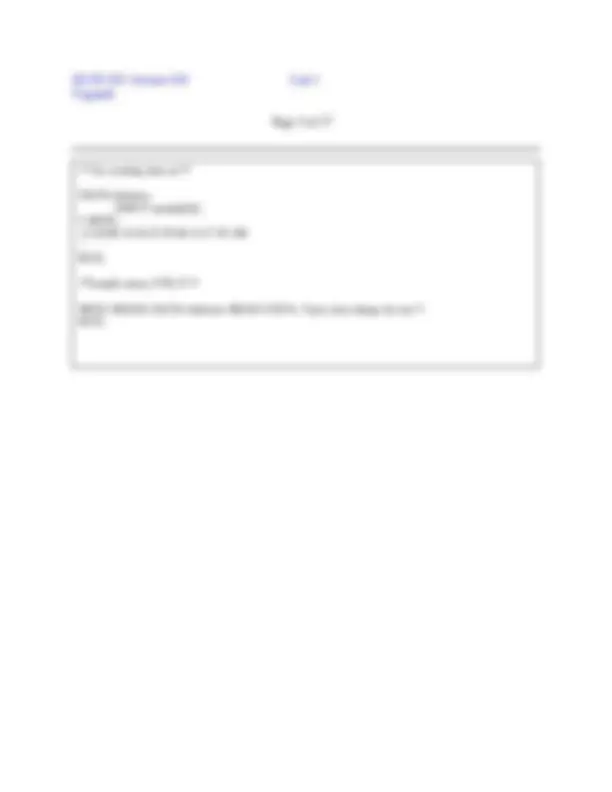
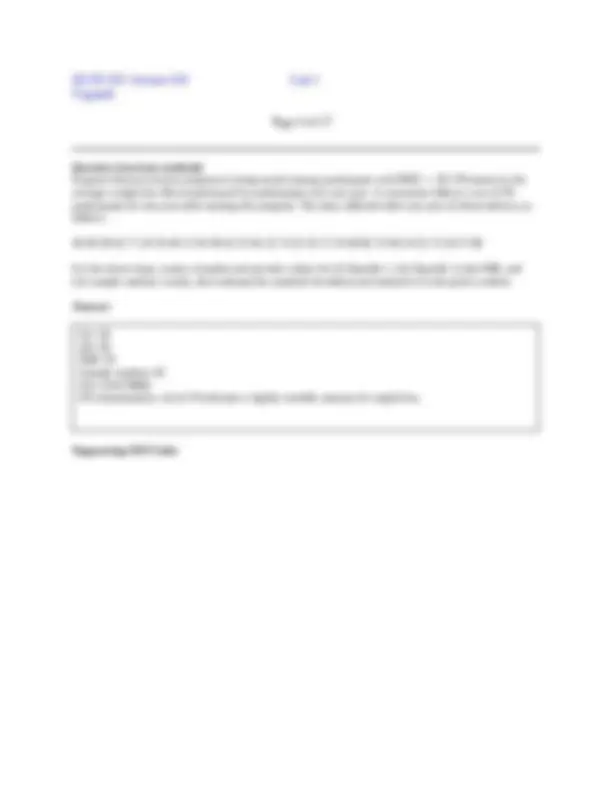
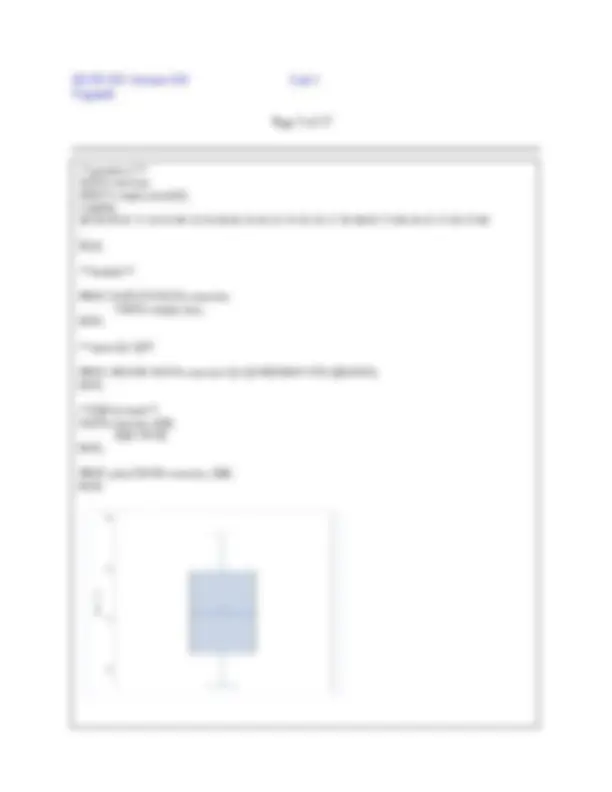
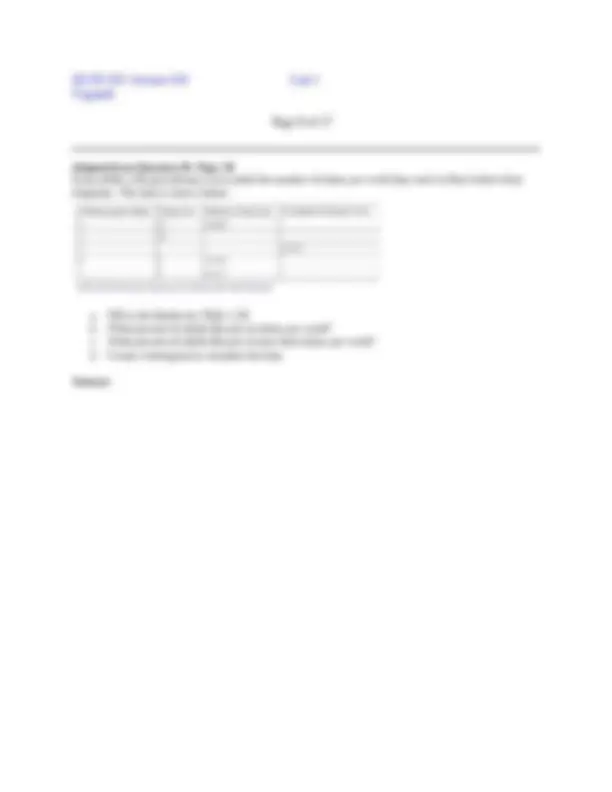
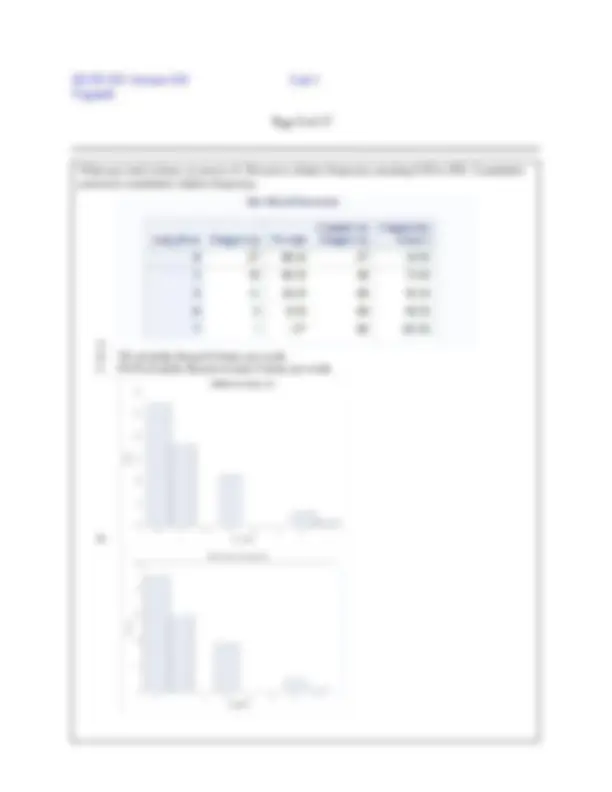
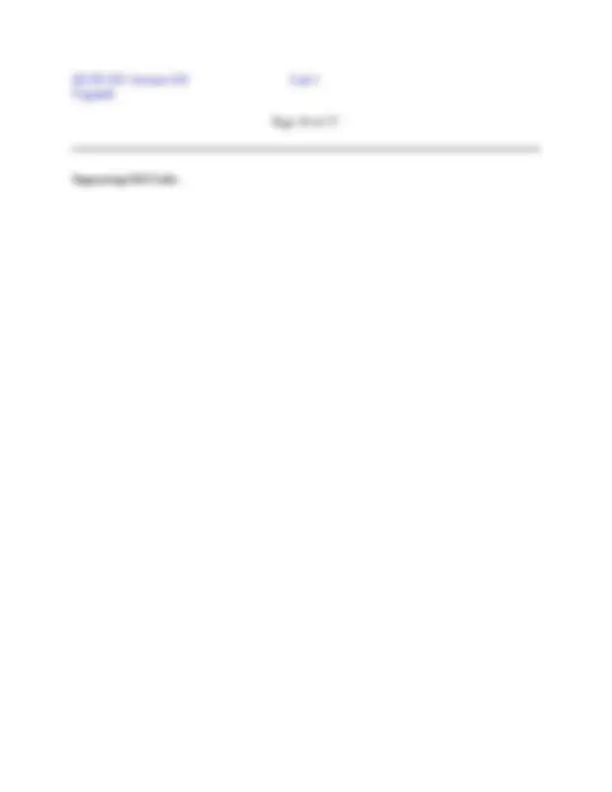
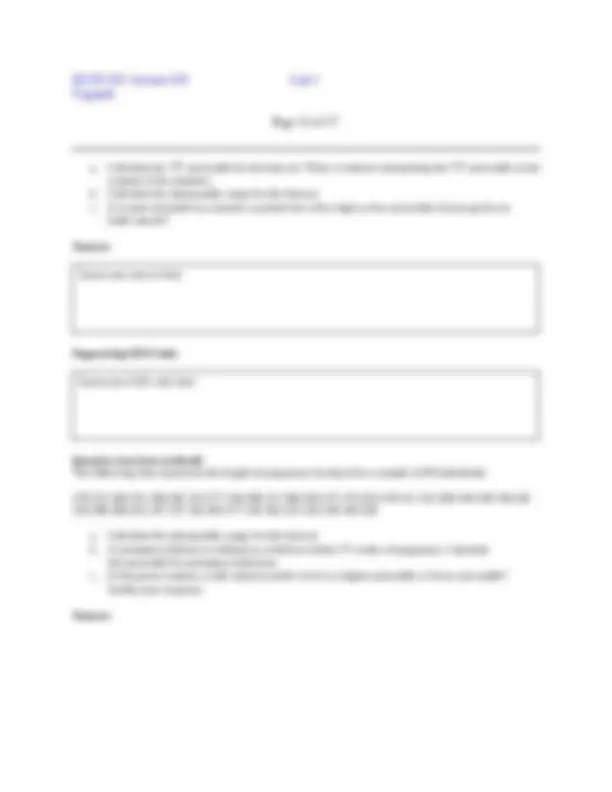
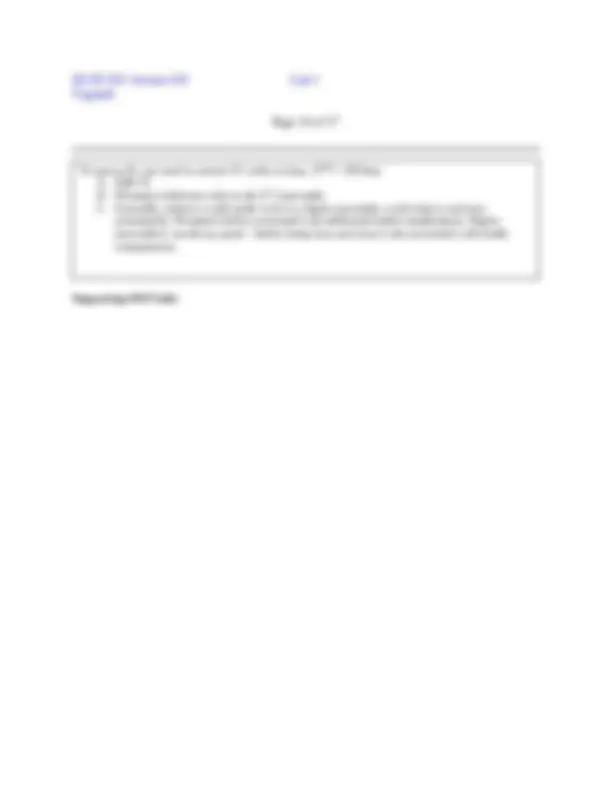
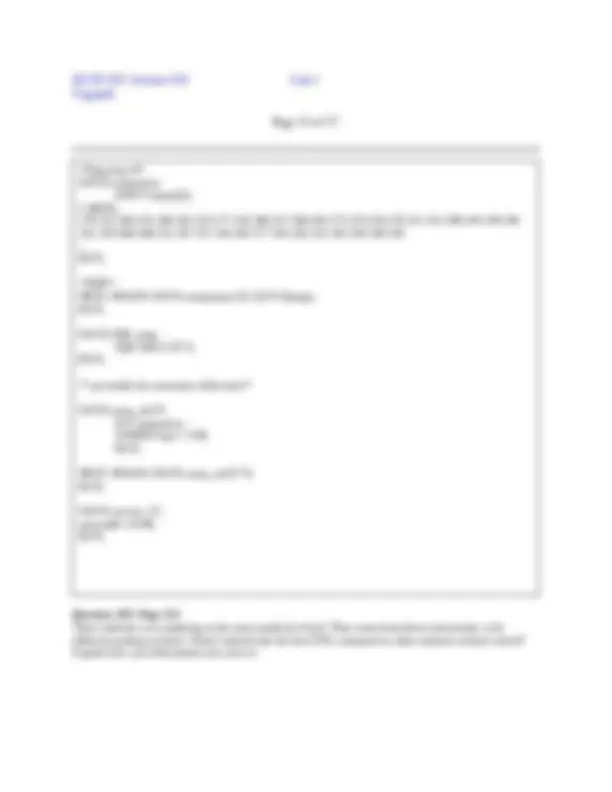


Study with the several resources on Docsity

Earn points by helping other students or get them with a premium plan


Prepare for your exams
Study with the several resources on Docsity

Earn points to download
Earn points by helping other students or get them with a premium plan
Community
Ask the community for help and clear up your study doubts
Discover the best universities in your country according to Docsity users
Free resources
Download our free guides on studying techniques, anxiety management strategies, and thesis advice from Docsity tutors
Researchers are conducting a clinical trial on influenza vaccinations. a. The research is funded by the producers of one of the vaccines in question. b. There are only two types of vaccinations included in the research: influenza vaccine and chicken pox vaccine. c. 25% of subjects experienced negative side effects from Vaccine A, 15% of subjects experienced negative side effects from Vaccine B, and the remainder had no side effects. The researchers claim that subjects experience fewer side effects with Vaccine A.
Typology: Quizzes
1 / 17

This page cannot be seen from the preview
Don't miss anything!










Be sure to support your solutions with the supporting SAS code, where appropriate. Adapted from 1.22. Page 39 Describe the unethical behavior, if any, in each example and describe how it could impact the reliability of the resulting data. Explain how the problem should be corrected. Researchers are conducting a clinical trial on influenza vaccinations. a. The research is funded by the producers of one of the vaccines in question. b. There are only two types of vaccinations included in the research: influenza vaccine and chicken pox vaccine. c. 25% of subjects experienced negative side effects from Vaccine A, 15% of subjects experienced negative side effects from Vaccine B, and the remainder had no side effects. The researchers claim that subjects experience fewer side effects with Vaccine A. Answer: Supporting SAS Code: Adapted from Try it 1.1. Page 8 We want to know the mean amount of money spent on textbooks each year by students at the University of Waterloo. We randomly survey 100 students at the university. Three of the students spent $200, $250, and $355, respectively. Identify the (i) target population, (ii) variable of interest, (iii) parameter of interest, (iv) sample, (v) sample size, and the (vi) sample statistic. Answer: Insert your answer here Insert your SAS code here
Supporting SAS Code: Question (not from textbook) Studies are being conducted to test the effectiveness of kidney transplants in diabetes patients. Of interest is the mean number of months that patients survive following the transplant. The following data (in months): Researcher A: 12, 56, 98, 14, 34, 23, 78, 64, 13, 27, 35, 108 Identify the (i) target population, (ii) variable of interest, (iii) parameter of interest, (iv) sample, (v) sample size, and the (vi) sample statistic. Answer: Supporting SAS Code: Insert your answer here Insert your SAS code here I) Target population: All patients who suffer from diabetes and have undergone a kidney transplant. II) Variable of interest: Length of time in months that patients with diabetes survive following a kidney transplant. III) Parameter of interest: mean/average length of time in months that patients with diabetes survive following a kidney transplant. IV) Sample: 12 patients who suffer from diabetes and have undergone a kidney transplant. V) Sample size: 12 VI) Sample statistic: sample mean/average length of time in months that patients with diabetes survive following a kidney transplant. A. The sample mean is 46.83 months.
Question (not from textbook) Suppose that an exercise program is being tested among participants with BMI >= 30. Of interest is the average weight loss (lbs) experienced by participants over one year. A researcher follows a set of 30 participants for one year after starting the program. The data collected after one year of observation is as follows: 40 58 59 42 71 24 55 49 13 54 36 42 31 65 22 74 32 16 17 33 46 65 73 36 24 25 72 26 57 66 For the above data, create a boxplot and provide values for (i) Quartile 1, (ii) Quartile 3, (iii) IQR, and (iv) sample median. Lastly, also estimate the standard deviation and interpret it in the given context. Answer: Supporting SAS Code:
Sample median= SD=19. SD interpretation: std of 19 indicates a highly variable amount of weight loss.
/* question 2 / DATA exercise; INPUT weight_loss@@; CARDS; 40 58 59 42 71 24 55 49 13 54 36 42 31 65 22 74 32 16 17 33 46 65 73 36 24 25 72 26 57 66 ; RUN; / boxplot / PROC SGPLOT DATA=exercise; VBOX weight_loss; RUN; / mean Q1 Q3/ PROC MEANS DATA=exercise Q1 Q3 MEDIAN STD QRANGE; RUN; / IQR by hand */ DATA exercise_IQR; IQR=59-26; RUN; PROC print DATA=exercise_IQR; RUN;
Supporting SAS Code: Insert your SAS code here
Adapted from Question 81. Page 56 Sixty adults with gum disease were asked the number of times per week they used to floss before their diagnosis. The data is shown below: a. Fill in the blanks for Table 1.34. b. What percent of adults flossed six times per week? c. What percent of adults flossed at most three times per week? d. Create a histogram to visualize the data. Answer:
Supporting SAS Code:
DATA flossing; INPUT num_floss counts; CARDS; 0 27 1 18 3 11 6 3 7 1 ; RUN; /* proc freq does frequency analysis / / We wanna do a frequency analysis using the PROC FREQ procedure. The weight statemenet indicates the t he variable count contains the freq or weight of each obersvation. Instead of treating each row as one observation, it uses the value of count to represent how many times that row should be counted. The table satement specifies the variable that we wanna do the frequency distribution for. / PROC FREQ DATA=flossing; WEIGHT counts; TABLE num_floss; RUN; / i want to create histogram with % on y axis / /The proc univariate procedure provides detailed descriptive statistics, data distributions and visualizations for one or more variable. Histogram num_floss creates a histogram for the variable mentioned. The midpoints = 0 to 7 specifies the histogram bins, by a certain number (1) in this case / PROC UNIVARIATE DATA=flossing; FREQ counts; HISTOGRAM num_floss /VSCALE=count MIDPOINTS=0 TO 7 BY 1; RUN; /making a histogram showing % on y axis / PROC UNIVARIATE DATA=flossing; FREQ counts; HISTOGRAM num_floss/ MIDPOINTS = 0 TO 7 BY 1; / by default SAS will do the graphs by % */ RUN;
a. Calculate the 75 th^ percentile for the data set. Write a sentence interpreting the 75 th^ percentile in the context of the situation. b. Calculate the interquartile range for the data set. c. Is it more desirable to consume a protein bar with a high or low percentile if your goal is to build muscle? Answer: Supporting SAS Code: Question (not from textbook) The following data represents the length of pregnancy (in days) for a sample of 40 individuals: 278 222 260 231 280 282 223 277 243 286 227 266 263 275 270 233 278 221 252 269 244 238 236 241 250 268 268 252 247 237 245 263 277 245 262 225 242 256 240 226 a. Calculate the interquartile range for the data set. b. A premature delivery is defined as a delivery before 37 weeks of pregnancy. Calculate the percentile for premature deliveries. c. In the given context, would subjects prefer to be in a higher percentile or lower percentile? Justify your response. Answer: Insert your answer here Insert your SAS code here
Supporting SAS Code: To answer B, you need to convert 37 weeks to days, 37*7= 259 days A. IQR= B. Premature deliveries refer to the 57.5 percentile. C. Generally, subjects would prefer to be in a higher percentile, so the baby is not born prematurely. Premature birth is associated with additional health complications. Higher percentile is not always good – babies being born post term is also associated with health consequences.
Answer: Supporting SAS Code: Question 104. Page 152 A music school has budgeted to purchase three musical instruments. They plan to purchase a piano costing $3000, a guitar costing $550, and a drum set costing $600. The mean cost for a piano is $ with a standard deviation of $2500. The mean cost of a guitar is $500 with a standard deviation of $200. The mean cost for drums is $700 with a standard deviation of $100. Which cost is the lowest, when compared to other instruments of the same type? Which cost is the highest compared to other instruments of the same type? Justify your answer. Answer: Supporting SAS Code: Insert your answer here Insert your SAS code here Insert your answer here
Question 104. Page 153 Table 2.76 gives the percent of children under five considered to be underweight: What is the best estimate for the mean percentage of underweight children? What is the standard deviation? Which intervals could be considered unusual? Answer: Supporting SAS Code: Insert your SAS code here Insert your answer here Insert your SAS code here